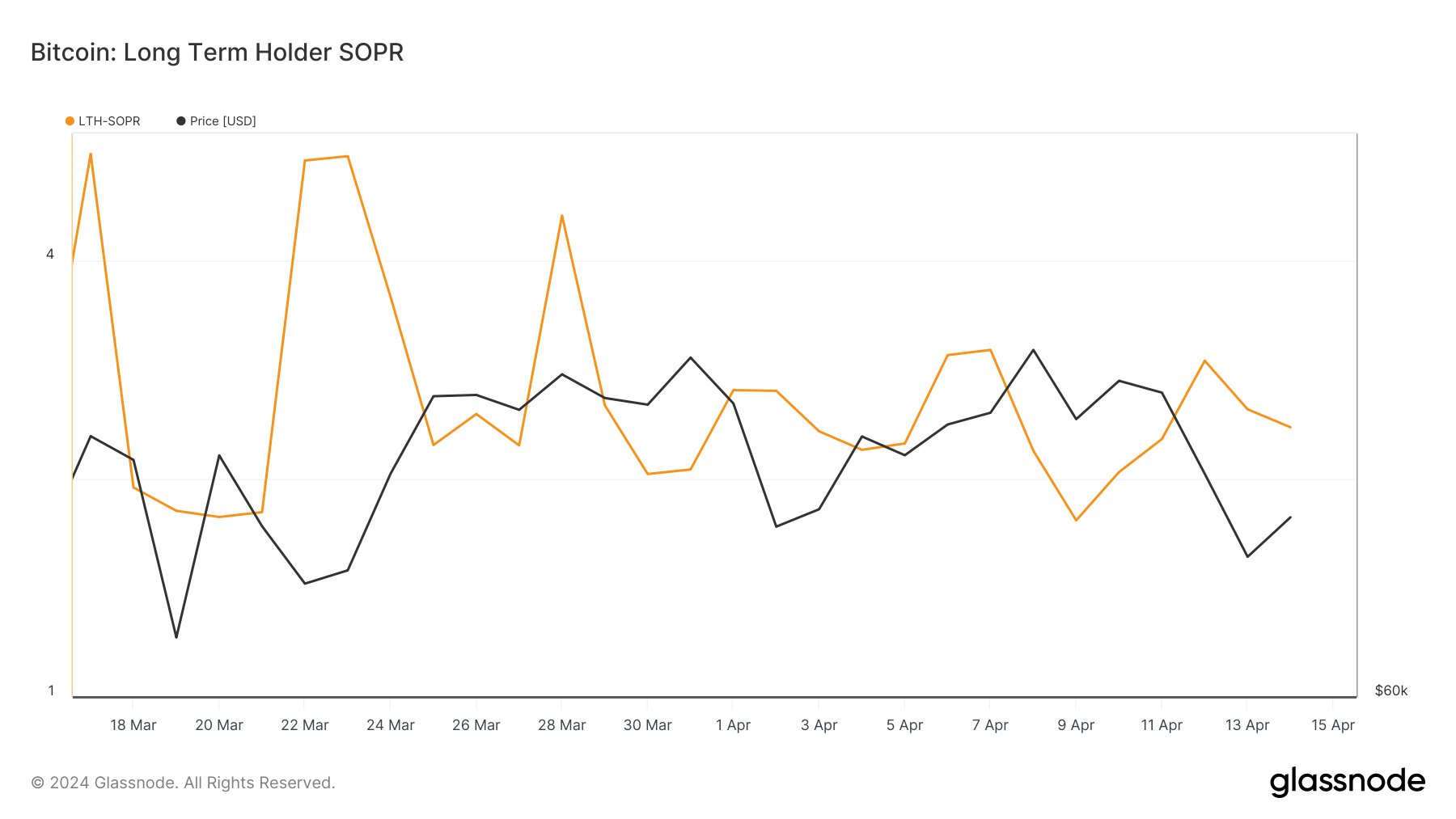Bitcoin saw a significant dip over the weekend, with BTC dropping from $70,090 on April 11 to $64,400 on April 13. Despite the initial fears of a broader conflict in the Middle East developing and a potential market downturn beginning, Bitcoin’s price managed to stabilize at around $66,000 as of April 15.
To understand the nature of these fluctuations — whether they indicate a mere short-term correction or signal a more significant shift — it is crucial to examine the behaviors of different market participants, particularly short-term and long-term holders.
Short-term holders (STHs) and long-term holders (LTHs) react differently to market volatility. STHs are typically more reactive to price changes and external events, tending to sell off their holdings during market dips. In contrast, LTHs generally maintain their positions through volatility, reflecting a commitment to Bitcoin’s long-term value.
One of the best metrics that assesses the immediate market reactions is the spent output profit ratio (SOPR), which measures the profit ratio realized by coins moved on-chain. SOPR values above 1 indicate that coins are, on average, being sold at a profit, whereas values below 1 suggest selling at a loss. A nuanced understanding requires dissecting this metric into STH SOPR and LTH SOPR to capture the distinct behaviors of these two groups.
During the dip, the STH SOPR fell sharply from 1.009 on April 12 to a yearly low of 0.979 on April 13, signaling that short-term holders were selling their Bitcoin at a loss. This metric slightly recovered to 0.984 by April 14, still below the breakeven threshold of 1.
Earlier in the year, when Bitcoin reached highs of over $73,000, the STH SOPR peaked at 1.204, showing profitable sales by short-term holders. Moreover, the spent price of Bitcoin by STHs on April 13 was $65,130, exceeding the spot trading price of $64,900, indicating that a significant number of STHs were selling at a loss.

On the other hand, long-term holders showed much more resilience. As Bitcoin’s price fell below $70,090, the LTH SOPR rose from 2.271 on April 11 to 2.913 on April 12, suggesting that long-term holders were still selling at a significant profit despite the downturn. This figure adjusted slightly to 2.358 by April 14 but remained well above the breakeven point.

Looking at SOPR alone, we can see that the weekend dip failed to sway the confidence of long-term holders. While long-term holder balances have been increasing in the past week or so, those that sold during the dip were small in numbers and were realizing profits.
Meanwhile, the behavior of short-term holders showed panic, with many opting to cut losses and sell their BTC. This suggests a reactionary approach to market news and price movements, further confirming the long-term trend associated with STHs.
The difference in responses from these two cohorts shows the importance of segment-specific analysis and shows that while short-term sentiment may waver, the long-term outlook remains robust.
The post Bitcoin’s weekend dip shakes out short-term holders appeared first on CryptoSlate.
